Our home galaxy the Milky Way is a barred galaxy made up of stars, gas and dust bound together by gravity.
The Milky Way formed around 13.6 billion years ago and contains approximately 100 billion stars. At the centre lies a supermassive black hole around which the celestial ensemble revolves.
Just as Earth orbits the Sun, the Sun and our Solar System orbit the centre of the Milky Way, taking approximately 200-250 million years to complete a single rotation.
In terms of our location within the Milky Way, we reside in the suburbs, about 25,000 lightyears away from the centre in one of its spiral arms.
Did you know that the Andromeda Galaxy is set to collide with our own Milky Way galaxy in the distant future? Find out more in our guide to the Andromeda-Milky Way collision.
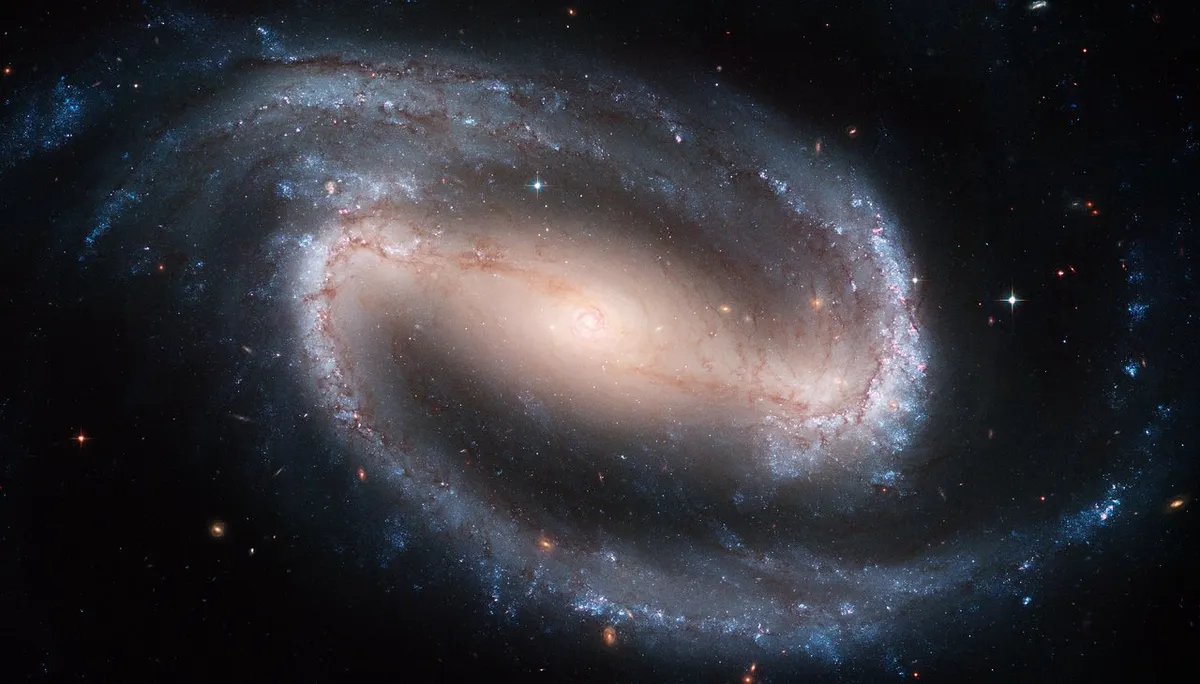
Despite living in galactic suburbia, we are no strangers to the bright lights of the city. On a dark night away from light pollution we can catch a glimpse of the bulge of the Milky Way with our own eyes.
This stellar sight right on our doorstep is our window into the Universe.
The milky band of light sprinkled across the night sky is what inspired our Galaxy's very name, but this band is just a snippet of the Milky Way.
If you wanted to view the entire Milky Way with your own eyes (appropriate eye and whole-body protection aside), you would need to travel about 36,000 lightyears out from Earth.
Current technology is a long way off allowing someone to undergo such a monumental journey, but luckily we have a trick up our sleeve.
Mapping the Milky Way
Operated by the European Space Agency (ESA), the Gaia mission seeks to survey the sky from orbit and produce the largest and most precise three-dimensional map of the Milky Way.
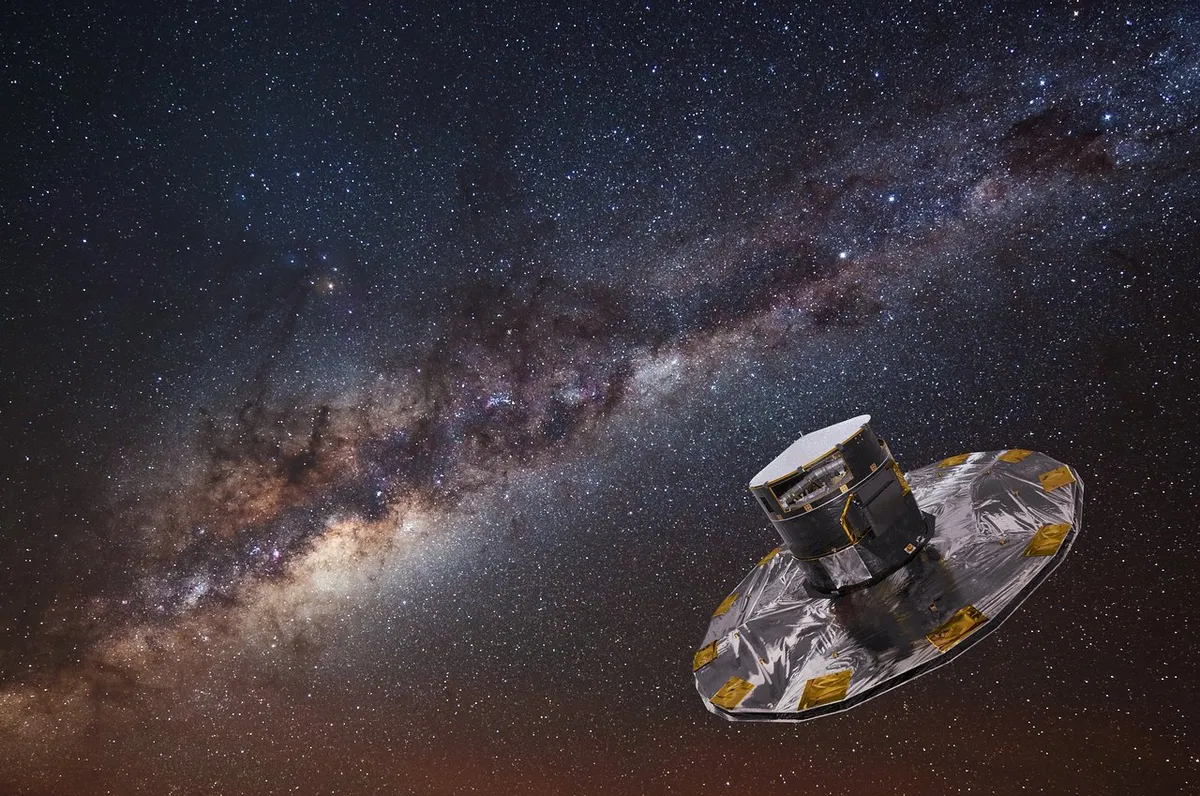
This mission is a collaboration between ESA's Gaia spacecraft and the European Southern Observatory (ESO) Very Large Telescope (VLT) observations.
This partnership involves Gaia surveying the sky and the VLT Survey Telescope keeping a close eye on Gaia, so that reliable movement and distance measurements can be achieved.
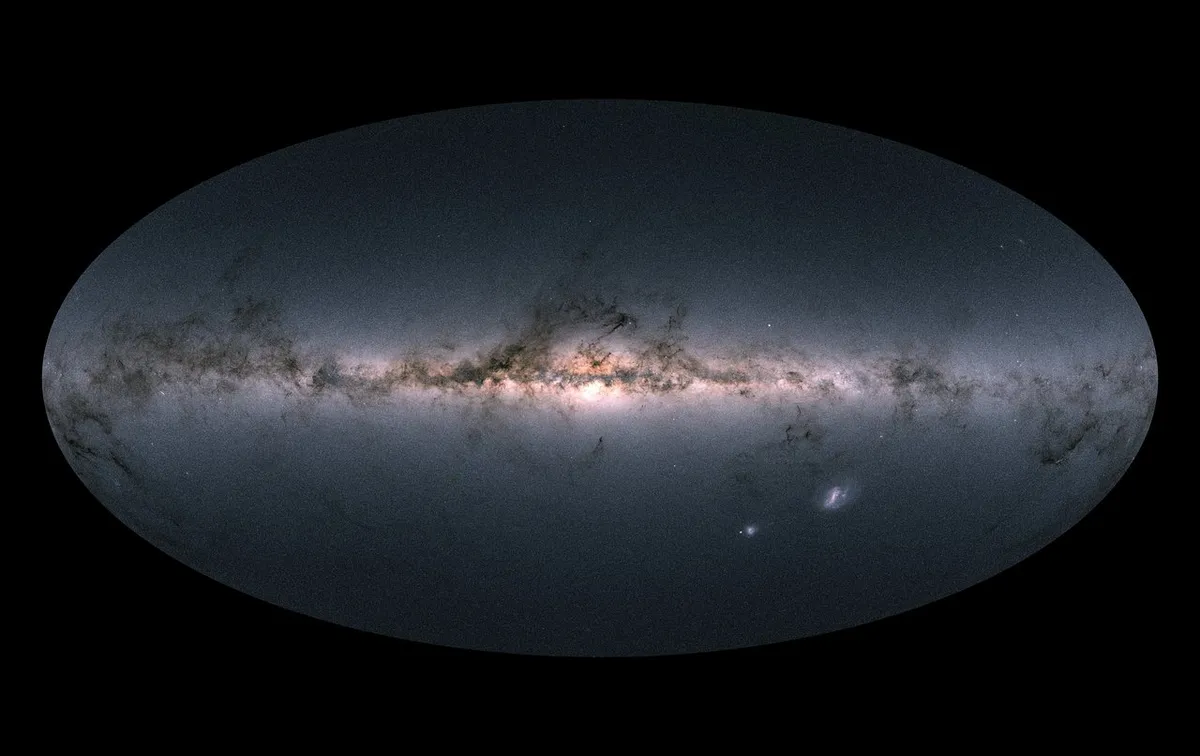
Since December 2013, Gaia has accurately measured over one billion stars, and it doesn't look like stopping anytime soon.
Recent findings from the Gaia mission are believed to be evidence of a 'stellar baby boom' within our Galaxy.
When a galaxy is formed, the fusion of gas and dust into stars is anticipated to continue at a constant rate (more or less), until the gas is depleted.
However, according to data from the Gaia mission, around five billion years ago this expected trend began to reverse.
Within a gush of cosmic activity, star formation peaked between two and three billion years ago.
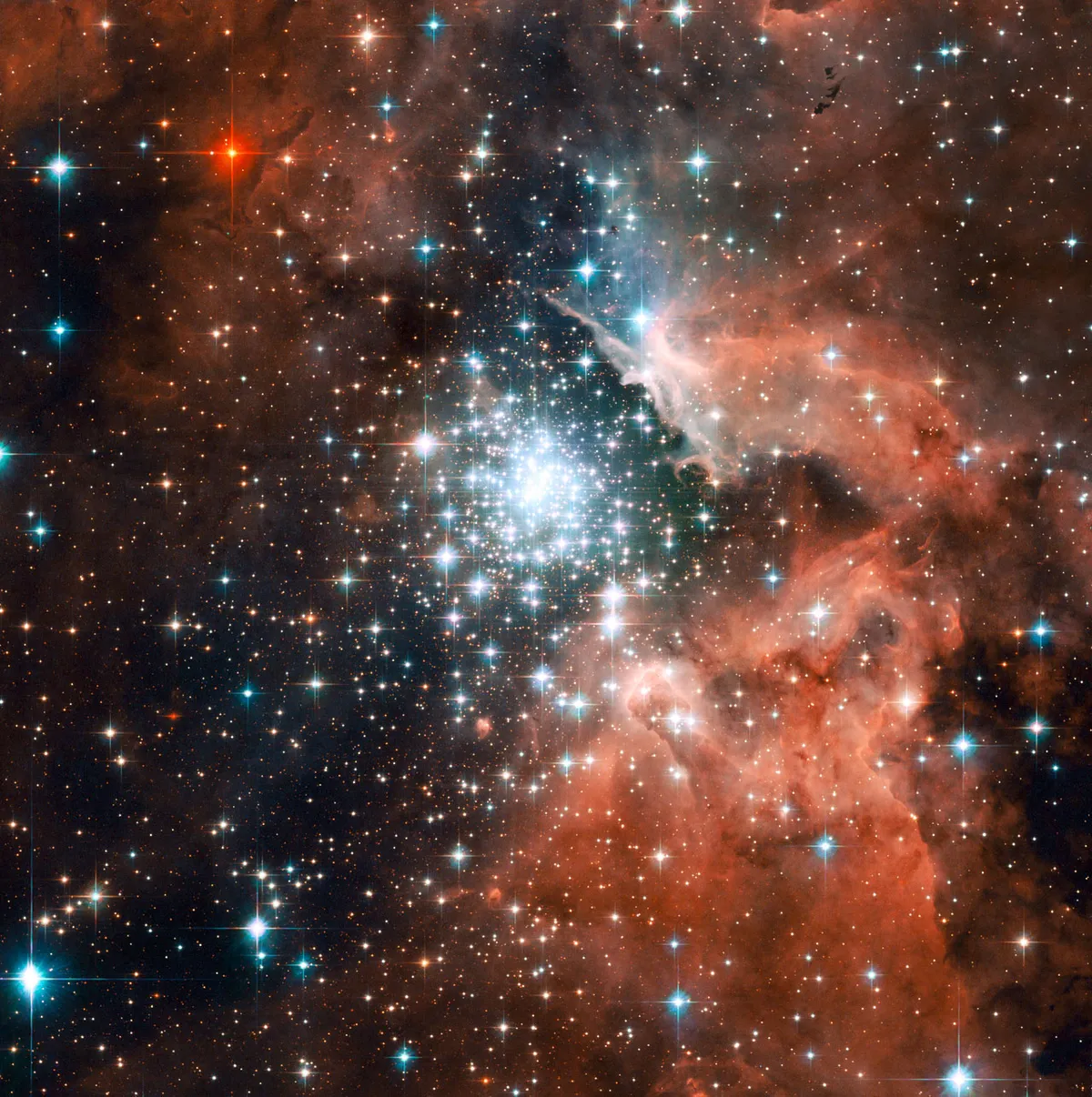
This stellar baby boom was no small feat: it is thought that over half the stars in the Milky Way formed during this period.
The Gaia mission is fundamentally important for our desire to understand the cosmos.
It not only helps us build a three-dimensional representation of our Galaxy but the data provided also helps to further our knowledge of the structure, origin and ultimately the evolution of the Milky Way.
However, we are not alone. Our Galaxy is only one of billions of others in the Universe.
Despite this vast amount, we are unlikely to be bothered by our galactic neighbours anytime soon. Down the road is the Andromeda Galaxy, our closest spiral-galaxy, around 2.5 million lightyears away.
Despite the distance, on a very dark night in the northern hemisphere the Andromeda Galaxy is visible to the naked eye (under ideal conditions and with good eyesight!)

Though keeping an eye on our closest neighbour may get easier over the next few billion years, as Andromeda is moving closer.
Travelling at an estimate rate of 400,000 km per hour, Andromeda is expected to collide with the Milky Way in about four billion years, although the outcome is difficult to predict.
Some closer galactic neighbours are the Large and Small Magellanic clouds, satellite galaxies of our own Milky Way.
Lying around 163,000 and 197,000 lightyears away respectively, the Large and Small Magellanic Clouds can be seen from the Southern hemisphere.
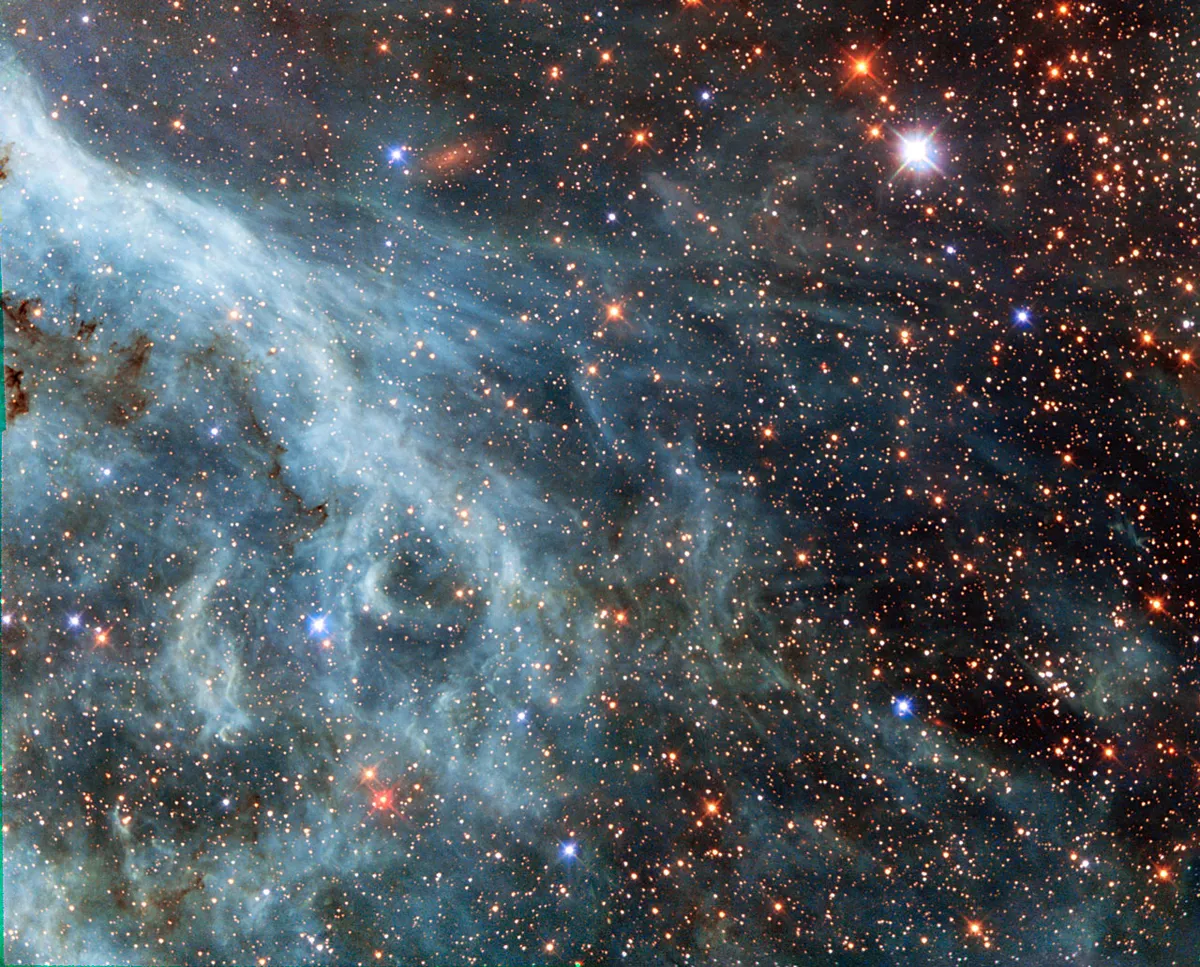
These galaxies are actually so close that the Milky Way absorbs gas and dust from the clouds.
Similar to the Andromeda Galaxy, the Large and Small Magellanic Clouds will eventually merge with the Milky Way.
The closer of the two Galaxies - the Large Magellanic Cloud - is predicted to collide with the Milky Way in 2.5 billion years.
Though the collision is expected to lead to a surge in star formation; like with the Andromeda collision, the exact outcome of such an impact is unknown.
What we do know is there is still so much to discover in our own cosmic neighbourhood.
With missions like Gaia, astronomers hope to shed light on the mysteries of the Milky Way and to use this knowledge to aid our understanding of the cosmos, and the galaxies yet to be discovered.
10 beautiful Milky Way images
Images of our home galaxy the Milky Way sent in by BBC Sky at Night Magazine readers.
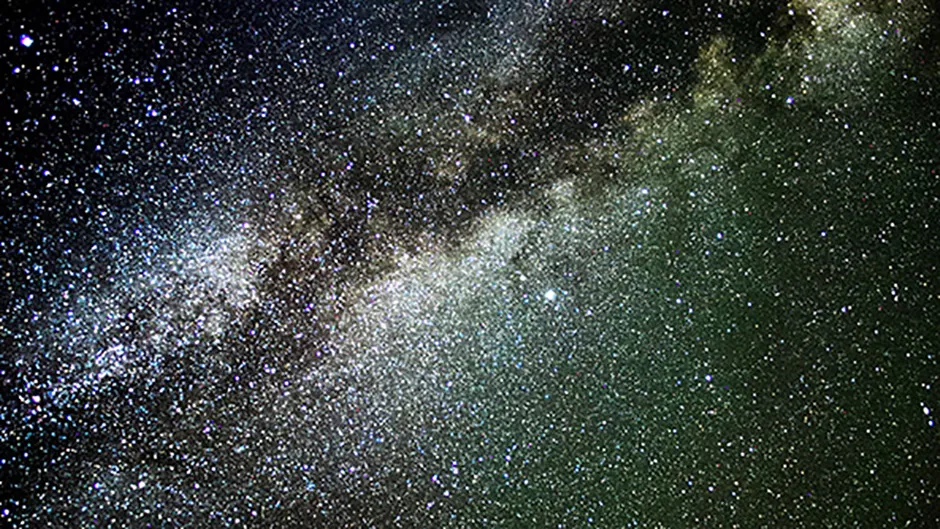
Dylan Walton, Charmouth, Dorset, 29 July 2015
Dylan says: "The sky was so dark the night I took this you could see the Milky Way with the naked eye.I couldn't resist capturing this beauty to share with my friends and family at home in Birmingham."
Equipment: Canon EOS 350D DSLR camera, Sky-Watcher Explorer-150P reflector, Sky-Watcher EQ2 mount.
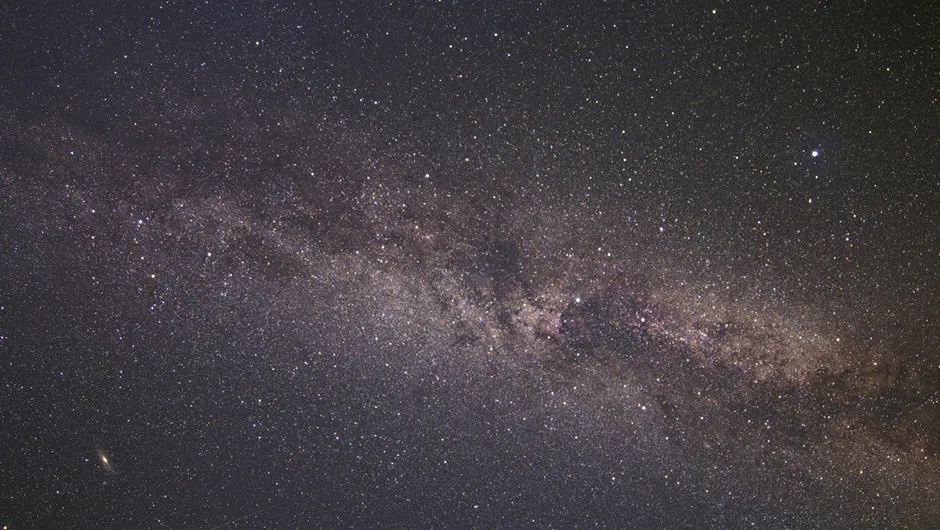
Margaret Dixon, Glendale Isle of Skye, 1 August 2016
Margaret says: "On holiday on the beautiful Isle of Skye, I had planned to take advantage of the glorious dark skies of Glendale.The sky was crystal clear and the Milky Way was clearly visible to the naked eye.My favourite area the Cygnus region directly above me, I set up my equipment and was thrilled to get this result."
Equipment: Canon EOS 600D DSLR camera, Samyang 14mm f2.8 lens, Ioptron tracking mount on tripod.
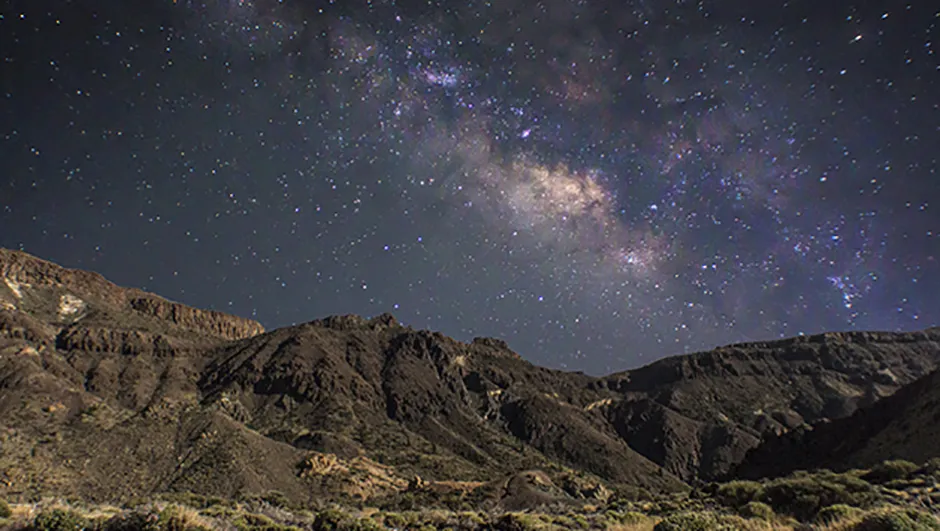
Peter Louer, Tenerife, Spain, 25 June 2015
Peter says: "I wanted to get a good image of the Milky Way rising over the Caldera in Teide National Park, Tenerife.For this I needed a reasonable amount of moonlight but without it washing out the sky, so I shot two images; the first a 20 sec exposure to get the Milky Way and the second with an exposure of 90 seconds to get detail in the foreground."
Equipment: Canon EOS 700D DSLR camera, 18-55mm lens set at 18mm.
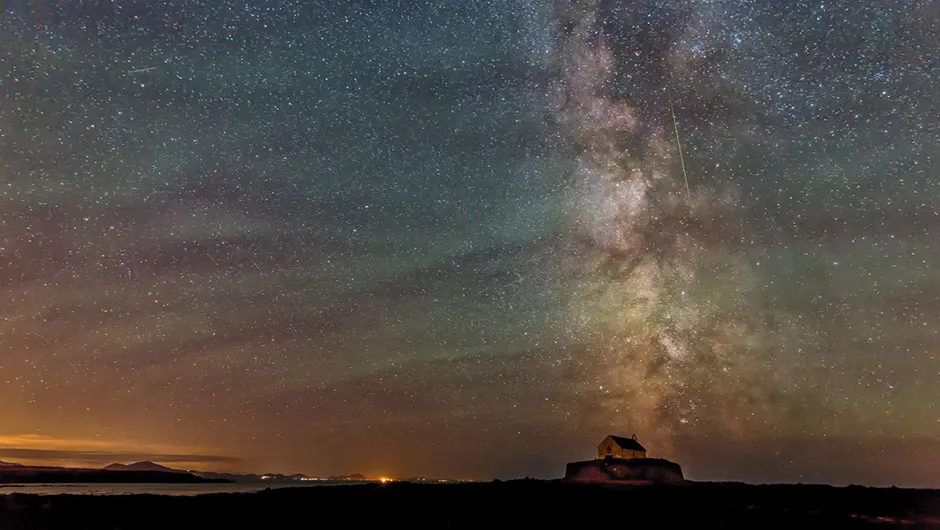
Kevin Lewis, Isle of Anglesey, 11 August 2015
Kevin says: "The ‘church in the sea’ on Anglesey is perfect for night photography: low light pollution, beautiful foreground interest, peaceful and reasonably accessible.My camera was shooting constantly and it caught early Perseids, tumbling satellites, flares and a stunning display of airglow."
Equipment used: Canon EOS 5D Mark III DSLR camera, 24-70mm lens.
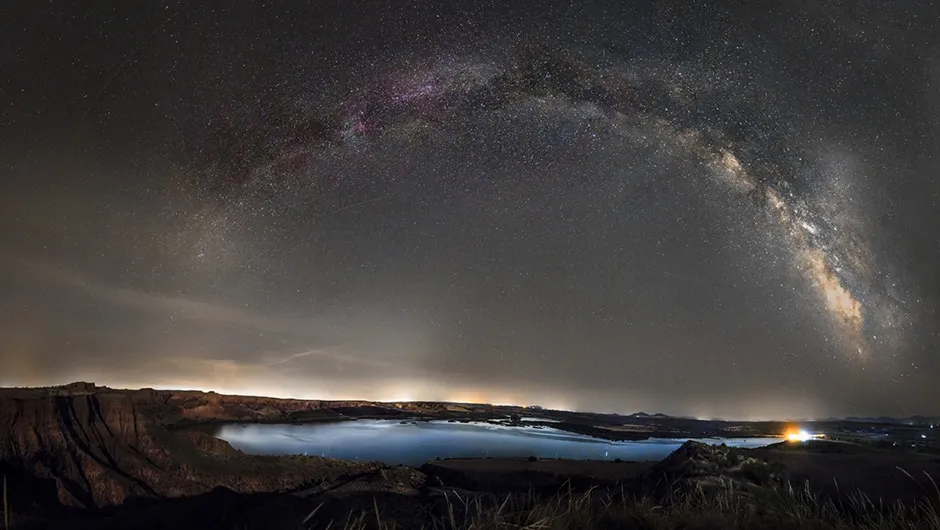
David Moreno Soler, Toledo, Spain, 10 October 2015
David says: "The landscape is illuminated by the Moon Glow opposite the Milky, making for a pretty picture and highlighting the regions of H-alpha.They are emission lines of the hydrogen spectrum associated with a lot of emission nebulae."
Equipment: Canon EOS 550D DSLR camera, 18mm lens.
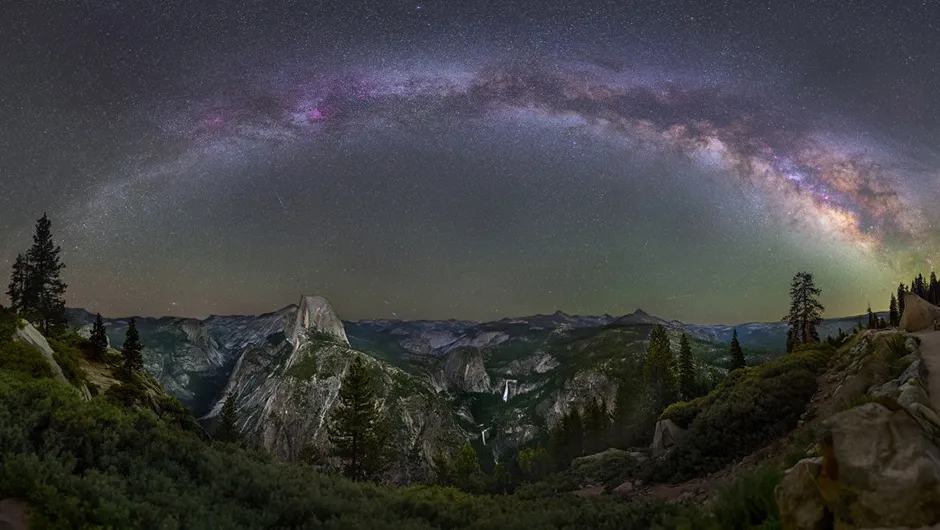
David Lane, California, US, 6 December 2015
David says: "This is one of the hardest images I have ever captured.At night you can't see the falls from Glacier Point but you can hear it: a distant roar to keep one company in the darkness.The altitude is great for visibility, although some of the greens and yellows are light pollution from the major cities and valley of California."
Equipment: Canon EOS 6D DSLR camera, iOptron iPano mount
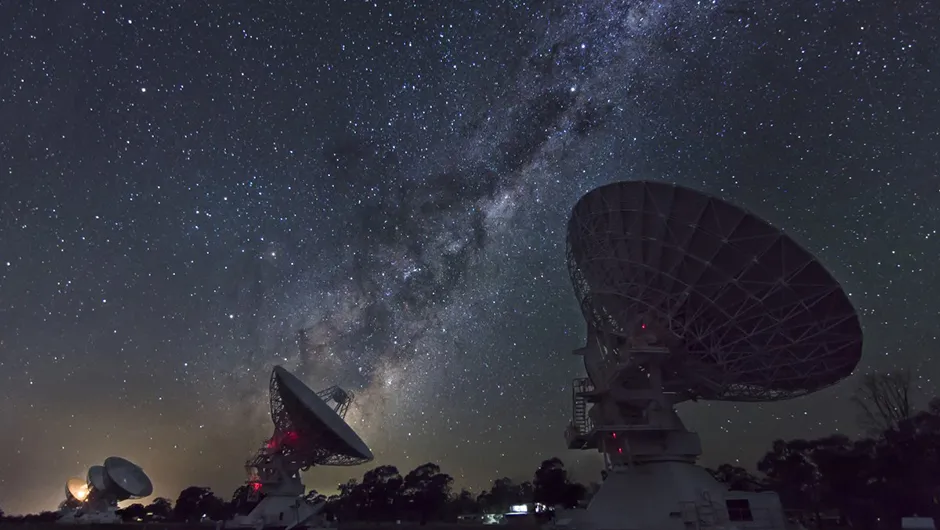
Ivan Slade, Australian Telescope Compact Array, 13 February 2016
Ivan says: “I had seen these telescopes online and knew the night skies must be very dark so had been wanting to go for some time.Just as the telescopes reoriented I could see a chance of getting the shot I wanted; the antenna aligning with the Milky Way as if sending out a beam into the cosmos.”
Equipment: Sony A7S MK II camera, Tamron 15-30mm lens, Induro tripod.
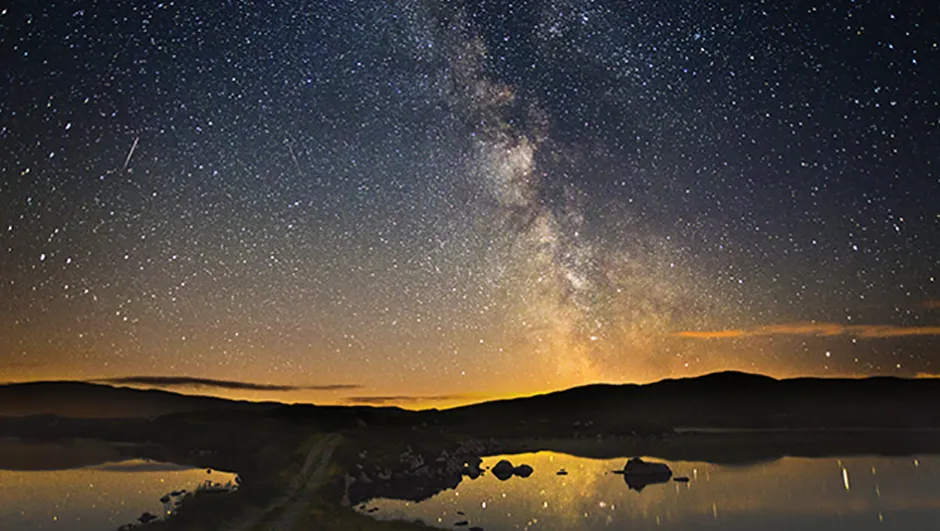
Brendan Alexander, Doochary, County Donegal, Ireland, 31 July 2016
Brendan says: "The journey over the rocky trail to this vantage point was tricky but well worth the effort.When I arrived at the bog lake I was greeted by the sight of the Milky Way blazing across the sky.The most challenging aspect of capturing this scene was framing it.In the end I was happy with the balance I achieved by including as much as possible of the Milky Way and capture the surrounding landscape."
Equipment: Canon EOS 6D DSLR camera, Sigma 20mm lens.
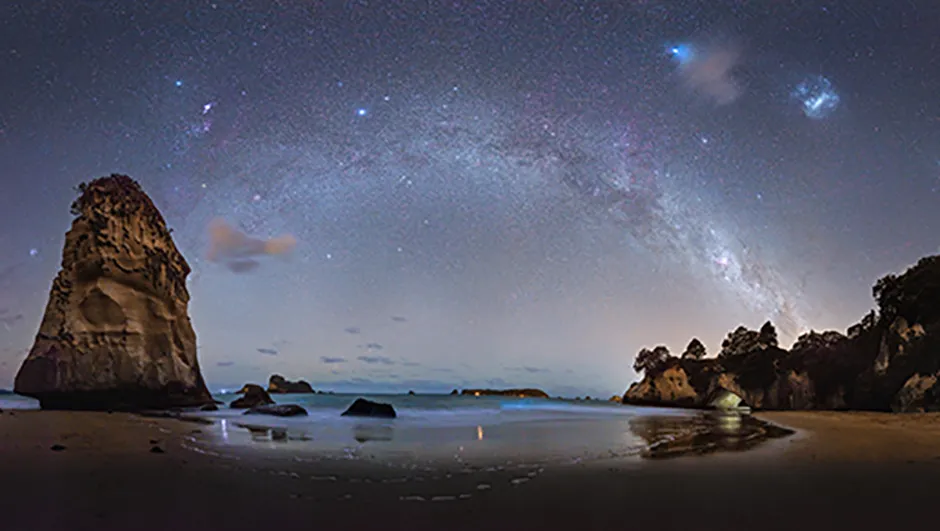
Alex Conu, Cathedral Cove, New Zealand, 1 May 2016
Alex says: "Most people visit Cathedral Cove during daytime.Well, I decided to go there at night and for a good reason.That was my first contact with the southern skies and it was like being reborn from an astronomical point of view."
Equipment: Canon EOS 5D Mark III DSLR camera, Zeiss Otus 28mm lens.
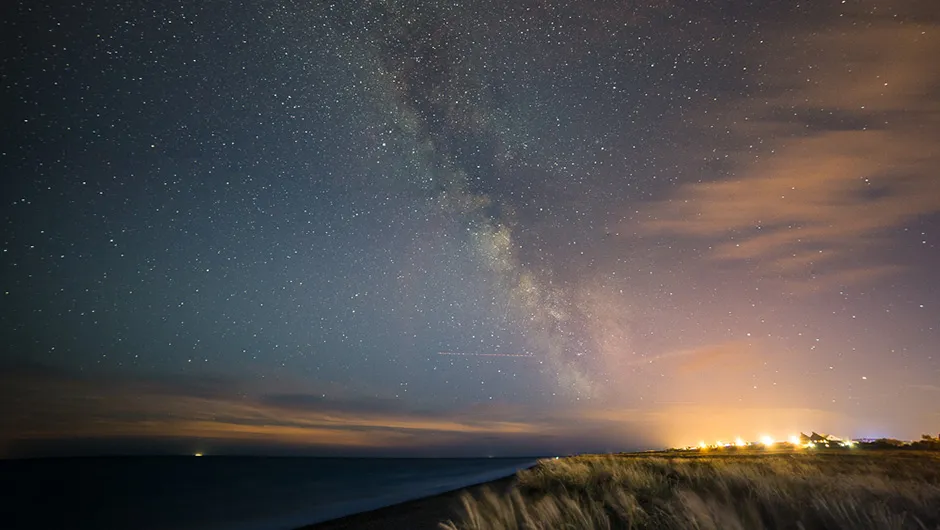
John Nellist, Kessingland Beach, Suffolk, 3 August 2016
John says: "The beach had a good clear horizon to the south, making it ideal for a Milky Way shot at this time of year.I wasn't prepared for the amount of light pollution coming from Southwold, which meant I had to adjust my settings, although I think the orange glow adds something to the image."
Equipment: Nikon D600 DSLR camera, Samyang 14mm lens.